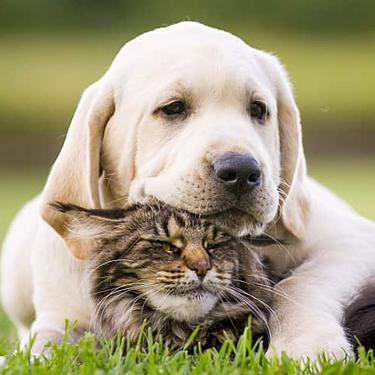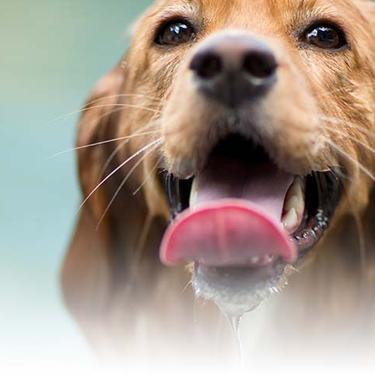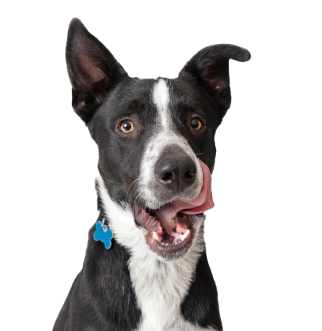
-
Find the right food for your pet
Take this quiz to see which food may be the best for your furry friend.
Find the right food for your pet
Take this quiz to see which food may be the best for your furry friend.
Featured products
 Adult 7+ Perfect Digestion Chicken, Whole Oats & Brown Rice Recipe Dog Food
Adult 7+ Perfect Digestion Chicken, Whole Oats & Brown Rice Recipe Dog FoodScience Diet's breakthrough nutrition supports ultimate digestive well-being & healthy microbiome for dogs age 7+
Shop Now Adult Perfect Weight & Joint Support Chicken Recipe Dry Dog Food
Adult Perfect Weight & Joint Support Chicken Recipe Dry Dog FoodThis weight management and mobility support dog food was created with Hill’s unique understanding of the biology of overweight dogs.
Shop Now Adult 7+ No Corn, Wheat, Soy Chicken & Brown Rice Dog Food
Adult 7+ No Corn, Wheat, Soy Chicken & Brown Rice Dog FoodSupports energy level and beautiful coat in mature dogs
Shop NowFeatured products
 Perfect Weight Salmon & Vegetable Canned Cat Food
Perfect Weight Salmon & Vegetable Canned Cat FoodOver 70% of cats lost weight within 10 weeks when fed this nutrition
Shop Now Adult Savory Chicken Entrée Cat Food
Adult Savory Chicken Entrée Cat FoodPrecisely balanced nutrition with the delicious taste of savory minced chicken to help fuel the energy needs of cats during the prime of their life
Shop Now Adult Perfect Digestion Chicken, Barley & Whole Oats Recipe Cat Food
Adult Perfect Digestion Chicken, Barley & Whole Oats Recipe Cat FoodScience Diet's breakthrough nutrition supports ultimate digestive well-being & healthy microbiome
Shop Now -
Dog
- Dog Tips & Articles
-
Health Category
- Weight
- Food & Environmental Sensitivities
- Urinary
- Digestive
- Joint
- Kidney
-
Life Stage
- Puppy Nutrition
- Adult Nutrition
- Senior Nutrition
Cat
- Cat Tips & Articles
-
Health Category
- Weight
- Skin & Food Sensitivities
- Urinary
- Digestive
- Kidney
-
Life Stage
- Kitten Nutrition
- Adult Nutrition
Featured articles
 The Incredible Science Behind Your Pet's Microbiome
The Incredible Science Behind Your Pet's MicrobiomeLearn what a pet's microbiome is, how it contributes to your pet's gut & overall health, and why nutrition is important in maintaining healthy microbiomes.
Read More Pet Food Storage Tips
Pet Food Storage TipsDiscover how and where to store your dry, as well as canned, dog and cat food. Learn how to find the "best before" dates on all Hill's pet food packaging.
Read More Water
WaterDiscover why water is the most important nutrient for your dog or cat to live a healthy life. Find out how much water your pet should consume each day.
Read More -
Find the right food for your pet
Find the right food for your pet


Most pet parents don't seem surprised when their male dog humps another dog, a pillow or a stranger's leg, but you may wonder why female dogs hump things. It's especially curious in female dogs who were spayed as puppies.
Harmless mounting here and there by males and females is normal with all dog breeds, but it's important to know when humping behavior might need to be addressed.
What Does Normal Behavior Look Like?
Whether you call it humping, mounting or thrusting, the behavior is natural in male and female dogs. For some dogs, it is a response to arousal. For others, it can just be a way to exert dominance and show that they're the top dog in the house.
Humping other pets, people or even the living room couch once or twice a day is not considered excessive. If even the occasional occurrence is bothersome to you or your family members, there are a few things you can do to limit or eliminate this quirky behavior.


Tasty Tips
Your Hill’s purchase helps support the Hill’s Food, Shelter & Love program, which provides food to hundreds of shelters across North America.

The ASPCA recommends teaching the "leave it" command early for all dogs to leave unwanted objects alone.
Ways to Prevent Mounting
Pet parents often notice mounting behavior starting about the time a female dog enters her first heat. Many veterinarians recommend spaying or neutering your dog before he or she reaches that point to prevent unwanted behaviors. Neutering also prevents a surprise litter of puppies and reduces your pet's risk of testicular or mammary cancer. However, even dogs who are spayed or neutered might still exhibit some humping behavior from time to time.
The ASPCA recommends teaching the "leave it" command early for all dogs to leave objects alone. Once your dog knows this command, you can signal to them that they should step away from furniture, other dogs or guests. If you see your dog preparing to mount an object (by rubbing, licking or whining), you can say "leave it" and distract your four-legged friend with a toy or a more desirable activity. Although it may take some time to train your dog to do this, it may be the easiest way to stop unwanted humping.
When to Be Concerned About Dog Humping
Although dog humping is a normal behavior, there are times it can be a sign of other underlying issues. Be careful to observe other behaviors that lead up to or accompany the humping to determine if you have reason to be concerned.
- Is the humping a sign of boredom? If your dog is lying around or pacing and then seems to start humping things, maybe they are just bored and need more playtime with you.
- Could your dog be trying to relieve an itch? Humping and excessive genital licking may be a sign that your dog has a problem, such as skin allergies or a urinary tract infection. If you notice your dog licking her backside, urinating frequently, having trouble urinating or showing signs of dehydration along with the humping, you may need to schedule a visit to the veterinarian, says the ASPCA.
- Is your dog stressed? The ASPCA notes that male and female dogs may use humping as a way to relieve stress. Is there a new pet or new baby in the home, or did you recently change your work schedule? Sometimes little changes in a dog's routine can lead to them feeling stressed, and every dog responds to stress differently. Try to figure out what could be causing your dog to be uneasy, and do what you can to familiarize your pup with the new routine. If the stress-humping goes on for too long, it could become a very difficult habit to break and you may need to consider professional obedience training.
- Has the behavior just become a bad habit? When you have ruled out all other causes and just can't get over the hump, it may be time to get your dog into obedience training. You may need to try a new approach like group socialization training, one-on-one training with a pro, or even implementing time-outs. If you and your veterinarian have ruled out medical causes for the humping, take your veterinarian's advice on the best way to move forward.
Why do female dogs hump things? For many reasons! Armed with a few answers, hopefully you and your canine friend can have less humping and more happiness.


Chrissie Klinger is an educator, writer and mother of two children, three dogs and three cats. Her dog Jake loves sitting on her lap every chance he gets! She enjoys living an active and eco-friendly lifestyle in rural Pennsylvania.
Related Articles


See what Vets have to say
Read reviews from the experts and see why Hill's is the #1 Veterinarian Recommended brand.
See what Vets have to say
Read reviews from the experts and see why Hill's is the #1 Veterinarian Recommended brand.



